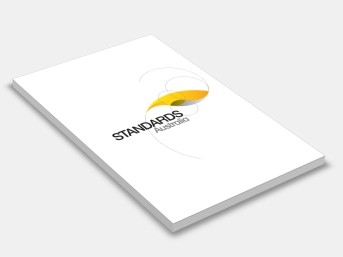AS/NZS 1428.4.1:2009 Design for access and mobility, Part 4.1: Means to assist the orientation of people with vision impairment - Tactile ground surface indicators
Standards Australia/Standards New Zealand
Supersedes: AS/NZS 1428.4:2002 Design for access and mobility, Part 4.1: Means to assist the orientation of people with vision impairment - Tactile ground surface indicators
Draft Designation: DR 04020Amended by: AS/NZS 1428.4.1:2009 AMDT 1 Design for access and mobility, Part 4.1: Means to assist the orientation of people with vision impairment - Tactile ground surface indicators
Amended by: AS/NZS 1428.4.1:2009 AMDT 2 Design for access and mobility, Part 4.1: Means to assist the orientation of people with vision impairment - Tactile ground surface indicators
This Standard was prepared by Standards Australia Committee ME-064, Access for
People with Disabilities, to supersede AS 1428.4—1992, Tactile ground surface
indicators for the orientation of people with vision impairment and AS/NZS 1428.4—
2002, Tactile indicators.
This Standard incorporates Amendment No. 1 (November 2010) and Amendment
No. 2 (December 2014). The changes required by the Amendments are indicated in
the text by a marginal bar and amendment number against the clause, note, table,
figure or part thereof affected.
This Standard is part of a series that is comprised of the following:
AS
1428 Design for access and mobility
1428.1 Part 1: General requirements for access—New building work
1428.2 Part 2: Enhanced and additional requirements—Buildings and facilities
1428.3 Part 3: Requirements for children and adolescents with physical
disabilities
1428.5 Part 5: Communication for people who are deaf or hearing impaired
AS/NZS
1428 Design for access and mobility
1428.4.1 Part 4.1: Means to assist the orientation of people with vision
impairment—Tactile ground surface indicators (this Standard)
The objective of this Standard is to assist in providing a safer built environment for
persons who are blind or vision-impaired, with particular reference to tactile
indicators.
The Building Code of Australia and Disability (Access to Premises—Buildings)
(Premises Standard ) define where access for people with a disability is required
and reference a number of Australian Standards (including this Standard) to provide
technical solutions to meet deemed-to-satisfy provisions.
The terms ‘normative’ and ‘informative’ have been used in this Standard to define
the application of the appendix to which they apply. A ‘normative’ appendix is an
integral part of a Standard, whereas an ‘informative’ appendix is only for information
and guidance.
The use of Notes in this Standard are of an advisory nature only to give explanation
to guidance to the user on recommended design considerations or technical
procedures, or to provide an informative cross-reference to other document or
publications. Notes to clauses in this Standard do not form a mandatory part for
compliance with this Standard.
Statements expressed in mandatory terms in notes to tables and figures are
deemed to be requirements of this Standard.
First published as AS1428.4-1992. Jointly revised and designated as AS/NZS 1428.4:2002. Jointly revised and designated as AS/NZS 1428.4.1:2009. Reissued incorporating Amendment No. 1 (November 2010). Reissued incorporating Amendment No. 2 (December 2014).
This Standard sets out requirements for the design and application of tactile
indicators for new building work, to ensure safe and dignified mobility of people who
are blind or vision impaired.
Contents:
Foreword
Section 1: Scope And Application
Section 2: Criteria And Application For Tactile Indicators
Section 3: Criteria And Application Of Directional Tactile Ground
Appendix A: Information On Design And Installation
Appendix B: Raised Pavement Markers
Appendix C: Kerb Ramps, Medians And Multiple Entry Points
Appendix D: Typical Examples Of Tactile Ground Surface Indicators For Bus Stops And Tram/Light Rail Stops
Appendix E: Laboratory And On-Site Measurement Of Luminance
Contrast
Bibliography
Access for People with Disabilities.
AUSTROADS; Association of Consultants in Access Australia; Australian Association of Occupational Therapists; Australian Building Codes Board; Australian Industry Group; Australian Institute of Building; Australian Institute of Building Surveyors; Blind Citizens Australia; Commonwealth Department of Veterans Affairs; Consumers’ Federation of Australia; Deafness Forum of Australia; Disabled Persons Assembly New Zealand; Housing Industry Association; Independent Living Centres Australia; Master Builders Australia; Mobility Research Centre New Zealand; Physical Disability Australia; Property Council of Australia; Royal AustralianInstitute of Architects.
